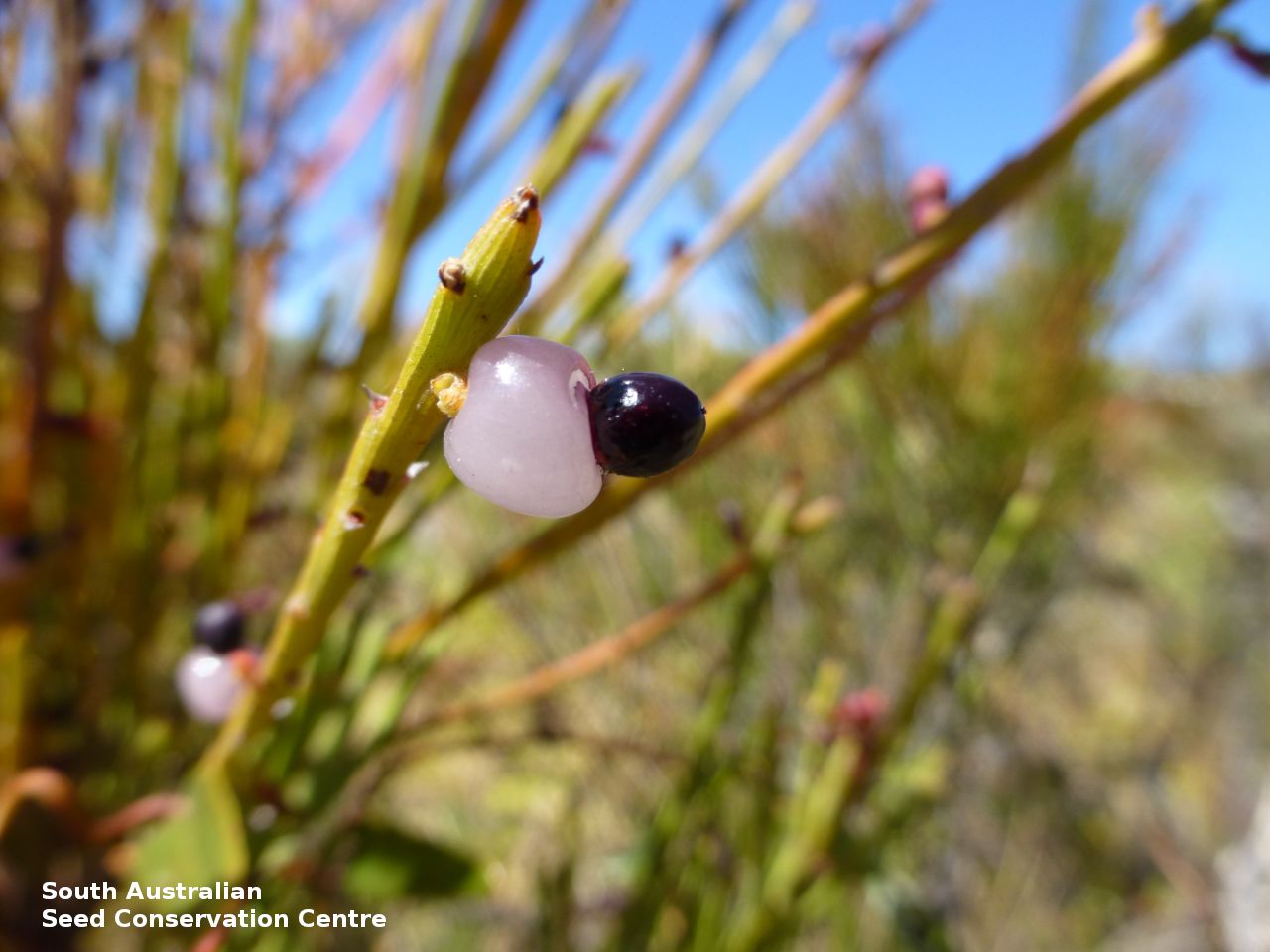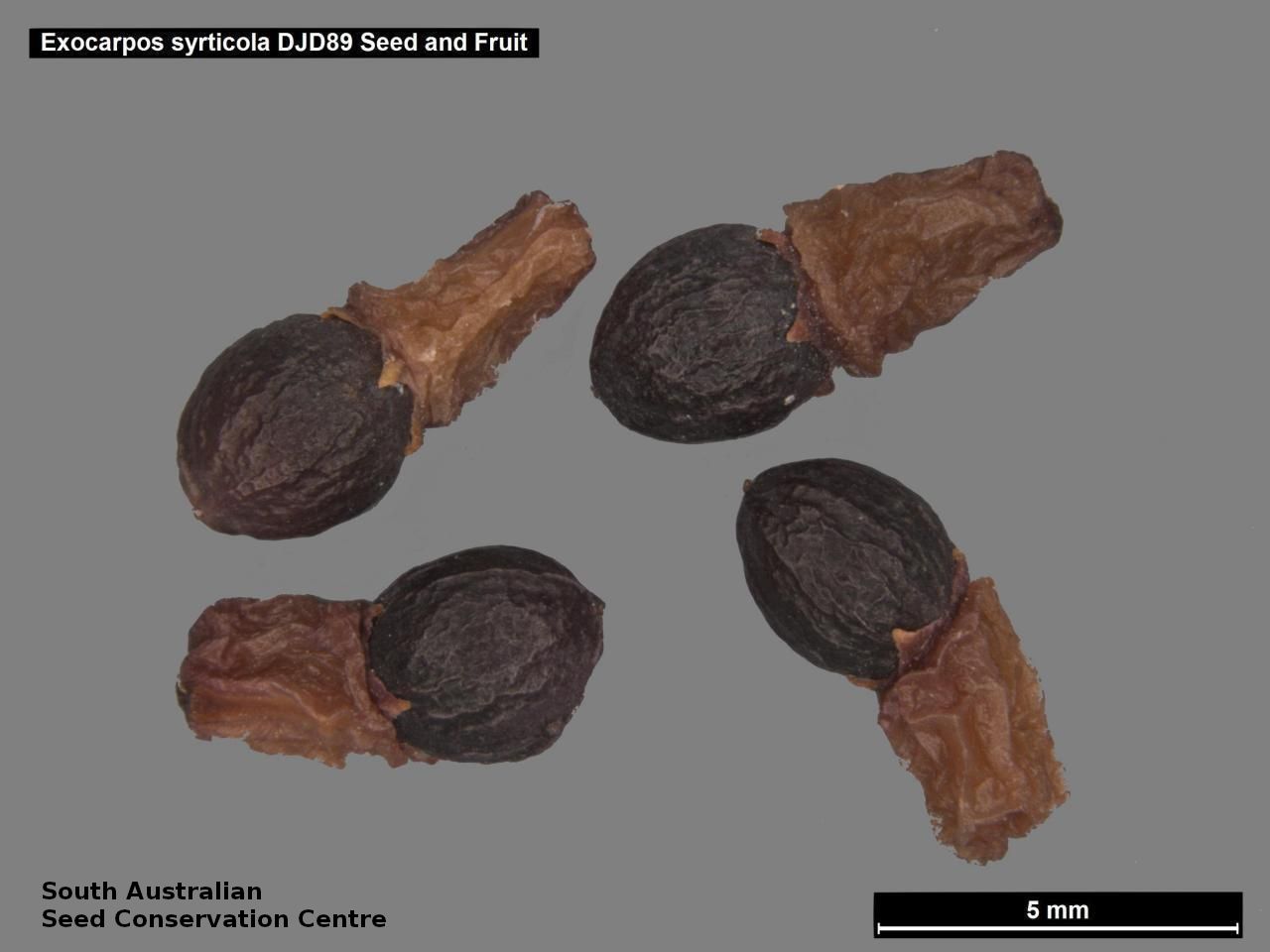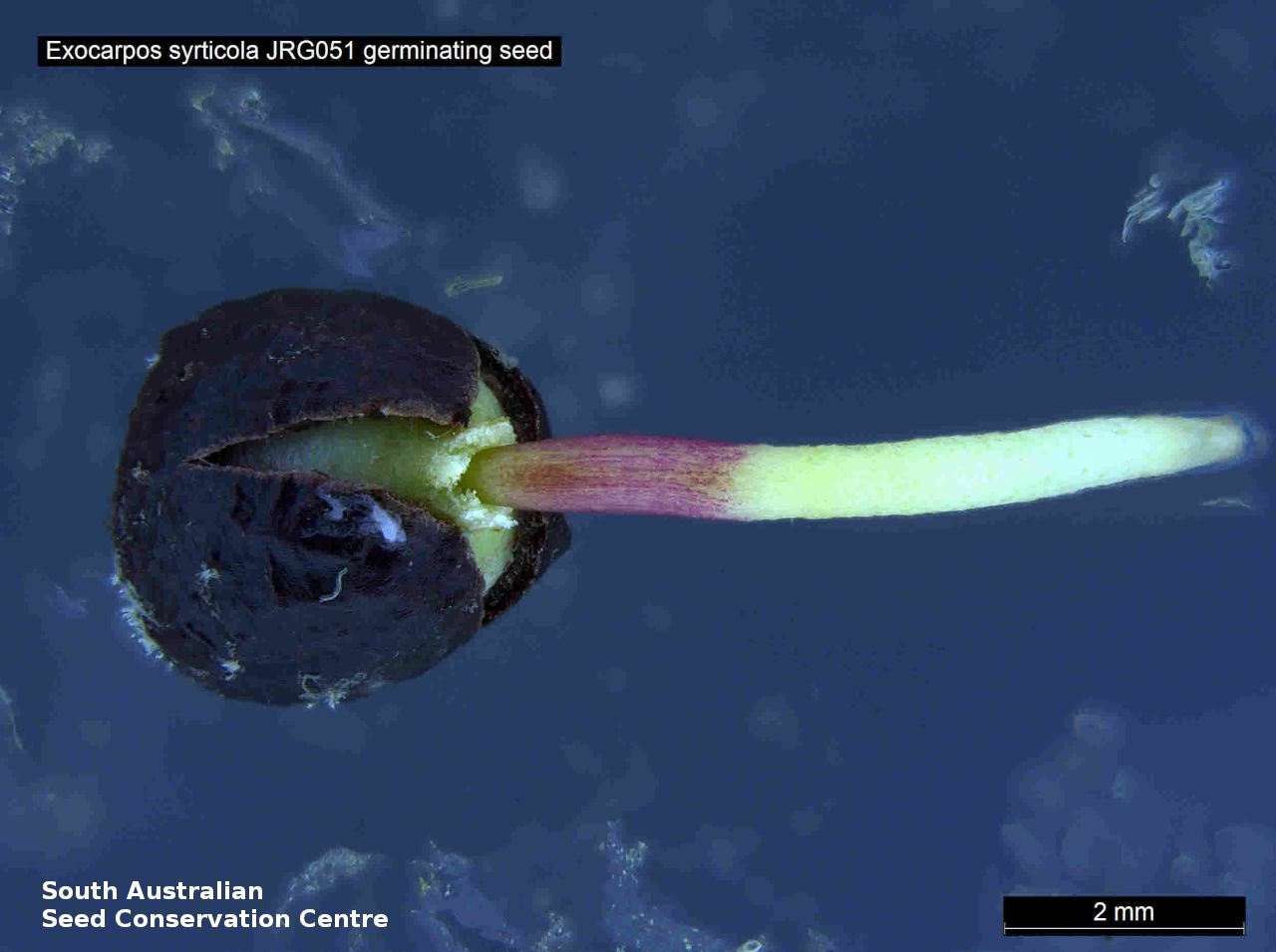


















Botanical art
Prior names
Exocarpos strictus var. syrticola
Common names
Coast Ballart
Coast Cherry
Etymology
Exocarpos from the Greek 'exo' meaning outside and 'caryon' meaning nut, referring to the succulent pedicel that resembles a pericarp below the nut. Syrticola meaning sand-dweller, alluding to the species' habitat.
Distribution and status
Found in coastal dunes from Eyre Peninsula to the lower Southeast of South Australia. Also found in Victoria and Tasmania. Native. Common in South Australia. Common in the other States.
Herbarium regions: Eyre Peninsula, Yorke Peninsula, Southern Lofty, South Eastern
AVH map: SA distribution map (external link)
Plant description
Densely branched shrub or small tree with slender erect branches, to 3.6 m high. Leaves reduced to lanceolate scales to 1.5 mm long. Inflorescence a pubescent rhachis, yellow green, glabrous 3-5 mm long. Flowering betwen October and December. Fruits are fruit consists of two parts, fleshy, whitish or pale-pink pedical (top part) and purple ovoid to globular nut bottom part). Seeds are woody brown globular seed to 4 mm long and 3 mm wide with a fleshy orange aril at one end. Seed embryo type is linear underdeveloped.
Seed collection and propagation
Collect seeds between November and February. Collect maturing fruits, the top aril is large, succulent, whitish or pink and bottom bit is hard and dark purple. Leave fruits to dry and harden before storing. Fleshy aril can be removed but it can be stored with the seed. Store the seeds with a desiccant such as dried silica beads or dry rice, in an air tight container in a cool and dry place. Predation of seeds can be high, however, seed viability is also high. From three collections, the seed viability was high, ranging from 95% to 100%. This species is generally difficult to germinate, it has morphophysiological dormancy and complex germination requirements.
| Location | No. of seeds (weight grams) | Number of plants | Date collected | Collection number Collection location | Date stored | % Viability | Storage temperature |
|---|---|---|---|---|---|---|---|
| BGA MSB | 1,900 (50 g) 1,900 (50 g) | 45 | 11-Jan-2005 | DJD89 Eyre Peninsula | 28-Mar-2006 | 100% | -18°C |
| BGA | 1,500 (62.92 g) | 17 | 21-Jan-2005 | MKJ76 South Eastern | 28-Mar-2006 | 100% | -18°C |
Number of plants: This is the number of plants from which the seeds were collected.
Collection location: The Herbarium of South Australia's region name.
% Viability: Percentage of filled healthy seeds determined by a cut test or x-ray.